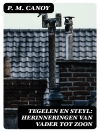Gustav Freytag’s ‘The Picture of German Life: 18th & 19th Century’ serves as a profound exploration of the social, cultural, and political landscapes of Germany during a pivotal era. Through a blend of vivid narrative and analytical rigor, Freytag crafts a rich tapestry that captures the zeitgeist of Germany, from the Enlightenment through the Romantic period. His literary style reflects the realistic and critical perspectives of the time, making ingenious use of contemporary literary forms to delineate the complexities of German society. The book contextualizes the evolution of ideas, aligning them with key historical events, ultimately illuminating the interplay between individual and collective experiences in a transforming nation. Gustav Freytag was a prominent German novelist and playwright whose experiences in a rapidly changing society deeply informed his work. Educated against the backdrop of a Germany fraught with political upheaval and cultural reinvention, Freytag’s own life experiences as a citizen and a writer compelled him to critically assess the dynamics of his native land. His literary contributions reflect a commitment to understanding the nuanced realities of life and thought during a transformative period, culminating in this insightful examination of German identity. This book is essential for readers interested in the evolution of modern German identity, providing invaluable insights into the historical and social currents that shaped contemporary Germany. Freytag’s insightful analysis and narrative clarity make this work not only informative but also a compelling read. Scholars, historians, and those with a passion for literature will find ‘The Picture of German Life’ a vital addition to their understanding of 18th and 19th-century Germany.
关于作者
Gustav Freytag (1816-1895) was a German novelist and playwright who emerged as an influential literary figure in the 19th century. He is most renowned for his critical role in shaping realism in German literature. Freytag was educated at the universities of Breslau and Berlin, later obtaining a doctorate in literature. He began his professional career as a literary critic and editor, contributing to the development of modern literary journalism. His theoretical work, ‘Die Technik des Dramas’ (1863), in which he proposed the famous pyramid structure for analyzing dramatic narratives, remains a significant reference for students of storytelling and literature. Among his contributions to literature, ‘The Picture of German Life: 18th & 19th Century’ stands as an essential examination of German society and culture during a period of rapid modernization and change, reflecting Freytag’s deep engagement with the historical and social contexts of his time. His literary style, characterized by vivid detail and a commitment to unembellished realism, resonated with contemporary audiences and continues to be of interest to scholars examining the evolution of the modern novel and drama. Freytag’s works have been studied not only for their artistic merit but also for what they reveal about the social and intellectual currents of Germany during his lifetime.












